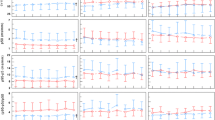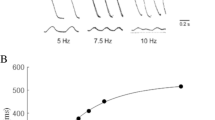Abstract
Recent studies have established the presence of three distinct cell types in the ventricular myocardium: epicardial, M and endocardial cells. Epicardial and M cell action potentials differ from endocardial cells with respect to the morphology of phase 1. These cells possess a prominent transient outward current (Ito)-mediated notch responsible for the 'spike and dome' morphology of the epicardial and M cell response. M cells are distinguished from the other cell types in that they display a smaller slowly activating delayed rectifier current (IKs), but a larger late sodium current (late INa) and sodium-calcium exchange current (INa-Ca). These ionic distinctions underlie the longer action potential duration (APD) and steeper APD-rate relationship of the M cell, which is more pronounced in the presence of antiarrhythmic agents with class III actions. The preferential prolongation of the M cell action potential results in the development of a transmural dispersion of repolarization (TDR), which can be estimated from the electrocardiogram (ECG) as the interval between the peak and the end of the T wave (QTpeak-QTend interval). Using the canine arterially perfused ventricular wedge model, transmembrane action potentials of the various cardiac cell types can be correlated to the waveforms of the ECG, providing insight into the cellular etiology of ECG abnormalities. Two congenital syndromes of sudden cardiac death that have been modeled using this technique are the long QT and Brugada syndromes. The long QT syndrome has been linked to 5 gene mutations on chromosomes 3, 7, 11, and 21. Mutations in the cardiac sodium channel SCN5A have been linked to families with a history of the Brugada syndrome. Although the etiologies of these two syndromes are different, lethal arrhythmias in both are thought to arise due to amplification of intrinsic electrical heterogeneities. Similar mechanisms are likely responsible for life-threatening arrhythmias in a variety of other cardiomyopathies ranging from heart failure and hypertrophy, which involve mechanisms similar to those operative in LQTS, to ischemia and infarction, which may involve mechanisms more closely resembling those responsible for the Brugada syndrome.
Similar content being viewed by others
Author information
Authors and Affiliations
Additional information
Received: 17 April 2001, Returned for revision: 15 May 2001, Revision received: 13 June 2001, Accepted: 18 June 2001
Rights and permissions
About this article
Cite this article
Antzelevitch, C., Fish, J. Electrical heterogeneity within the ventricular wall. Basic Res Cardiol 96, 517–527 (2001). https://doi.org/10.1007/s003950170002
Issue Date:
DOI: https://doi.org/10.1007/s003950170002




